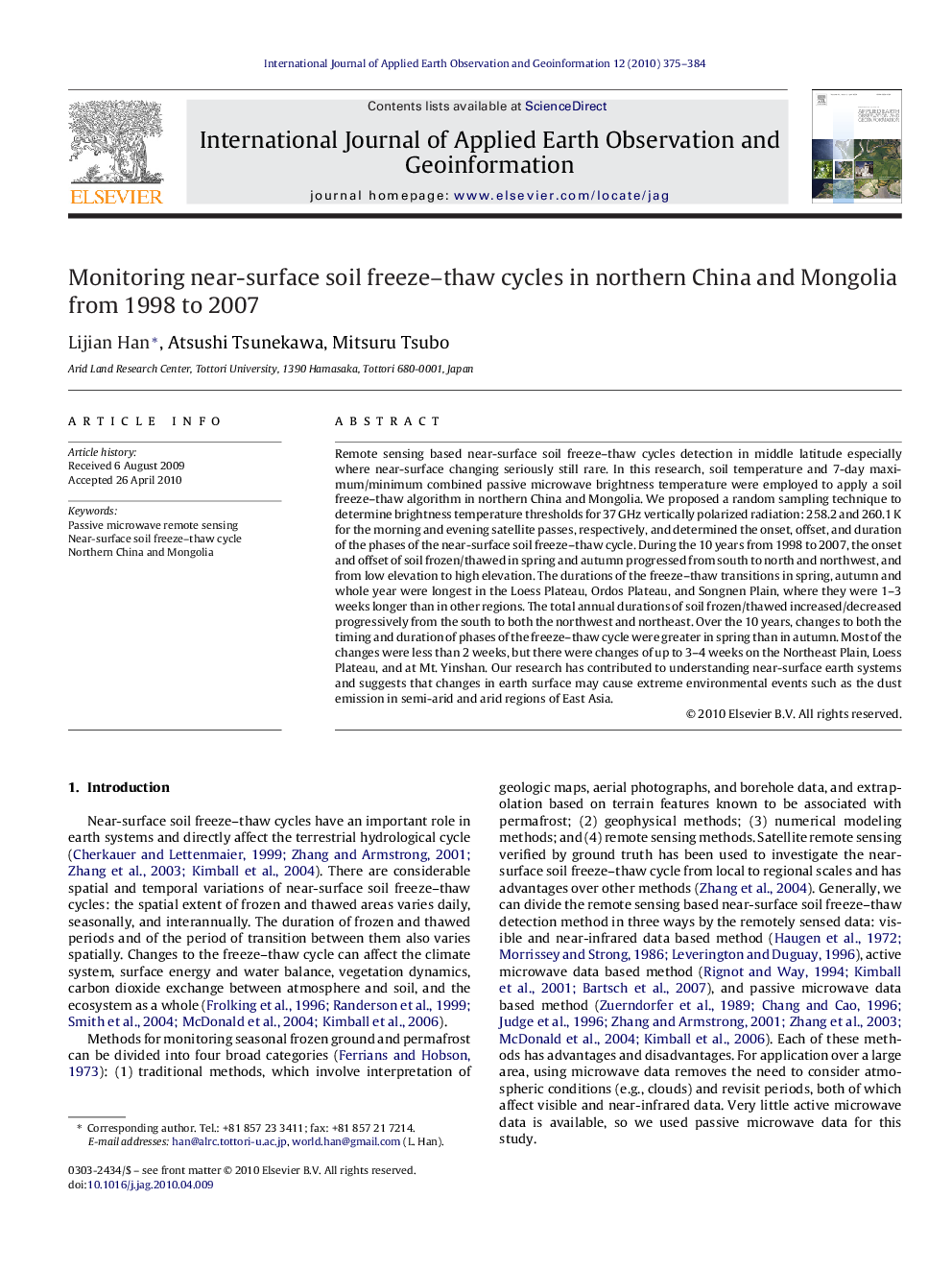| Article ID | Journal | Published Year | Pages | File Type |
|---|---|---|---|---|
| 4465062 | International Journal of Applied Earth Observation and Geoinformation | 2010 | 10 Pages |
Remote sensing based near-surface soil freeze–thaw cycles detection in middle latitude especially where near-surface changing seriously still rare. In this research, soil temperature and 7-day maximum/minimum combined passive microwave brightness temperature were employed to apply a soil freeze–thaw algorithm in northern China and Mongolia. We proposed a random sampling technique to determine brightness temperature thresholds for 37 GHz vertically polarized radiation: 258.2 and 260.1 K for the morning and evening satellite passes, respectively, and determined the onset, offset, and duration of the phases of the near-surface soil freeze–thaw cycle. During the 10 years from 1998 to 2007, the onset and offset of soil frozen/thawed in spring and autumn progressed from south to north and northwest, and from low elevation to high elevation. The durations of the freeze–thaw transitions in spring, autumn and whole year were longest in the Loess Plateau, Ordos Plateau, and Songnen Plain, where they were 1–3 weeks longer than in other regions. The total annual durations of soil frozen/thawed increased/decreased progressively from the south to both the northwest and northeast. Over the 10 years, changes to both the timing and duration of phases of the freeze–thaw cycle were greater in spring than in autumn. Most of the changes were less than 2 weeks, but there were changes of up to 3–4 weeks on the Northeast Plain, Loess Plateau, and at Mt. Yinshan. Our research has contributed to understanding near-surface earth systems and suggests that changes in earth surface may cause extreme environmental events such as the dust emission in semi-arid and arid regions of East Asia.
